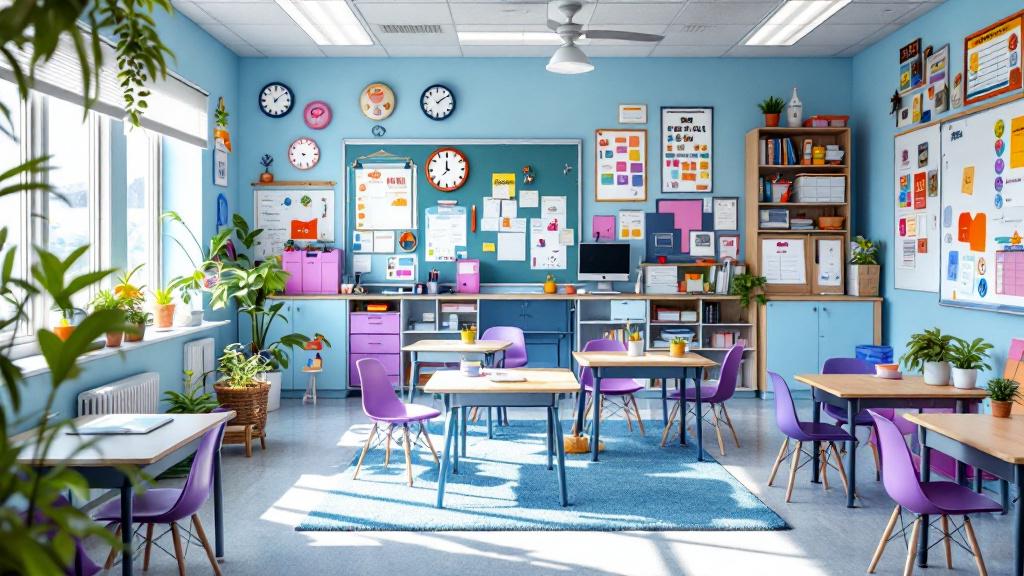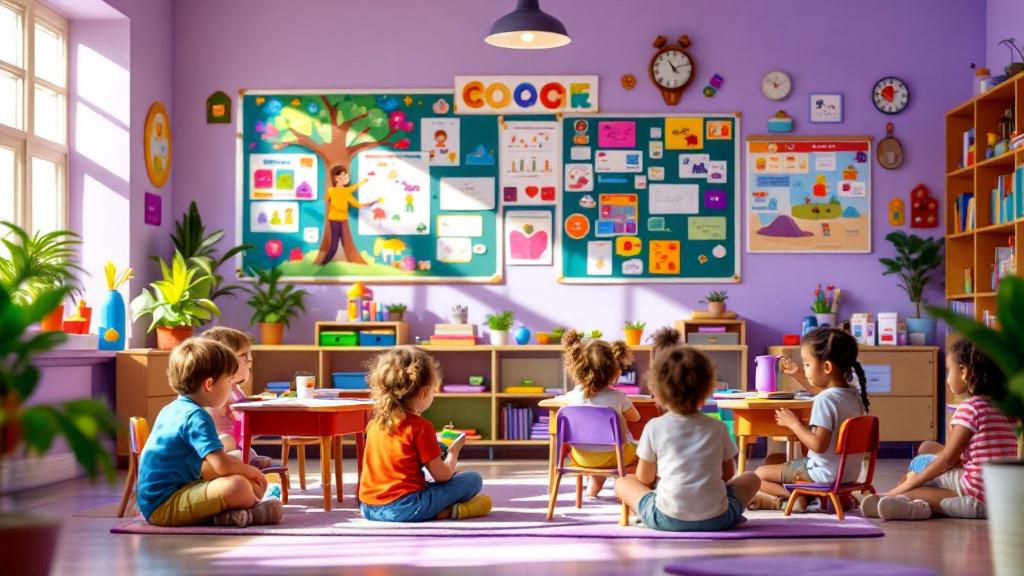Understanding the Power of Tailored Interventions in Autism Support
Applied Behavior Analysis (ABA) therapy is a cornerstone for supporting individuals with autism, focusing on systematic methods to develop skills and reduce undesirable behaviors. The effectiveness of ABA largely depends on how well interventions are tailored to meet each individual's unique needs, learning preferences, and sensory profiles. By customizing strategies such as Discrete Trial Training, Natural Environment Training, and visual supports, practitioners can significantly enhance engagement, facilitate meaningful learning, and improve overall outcomes.
The Spectrum of ABA Techniques and Their Customization
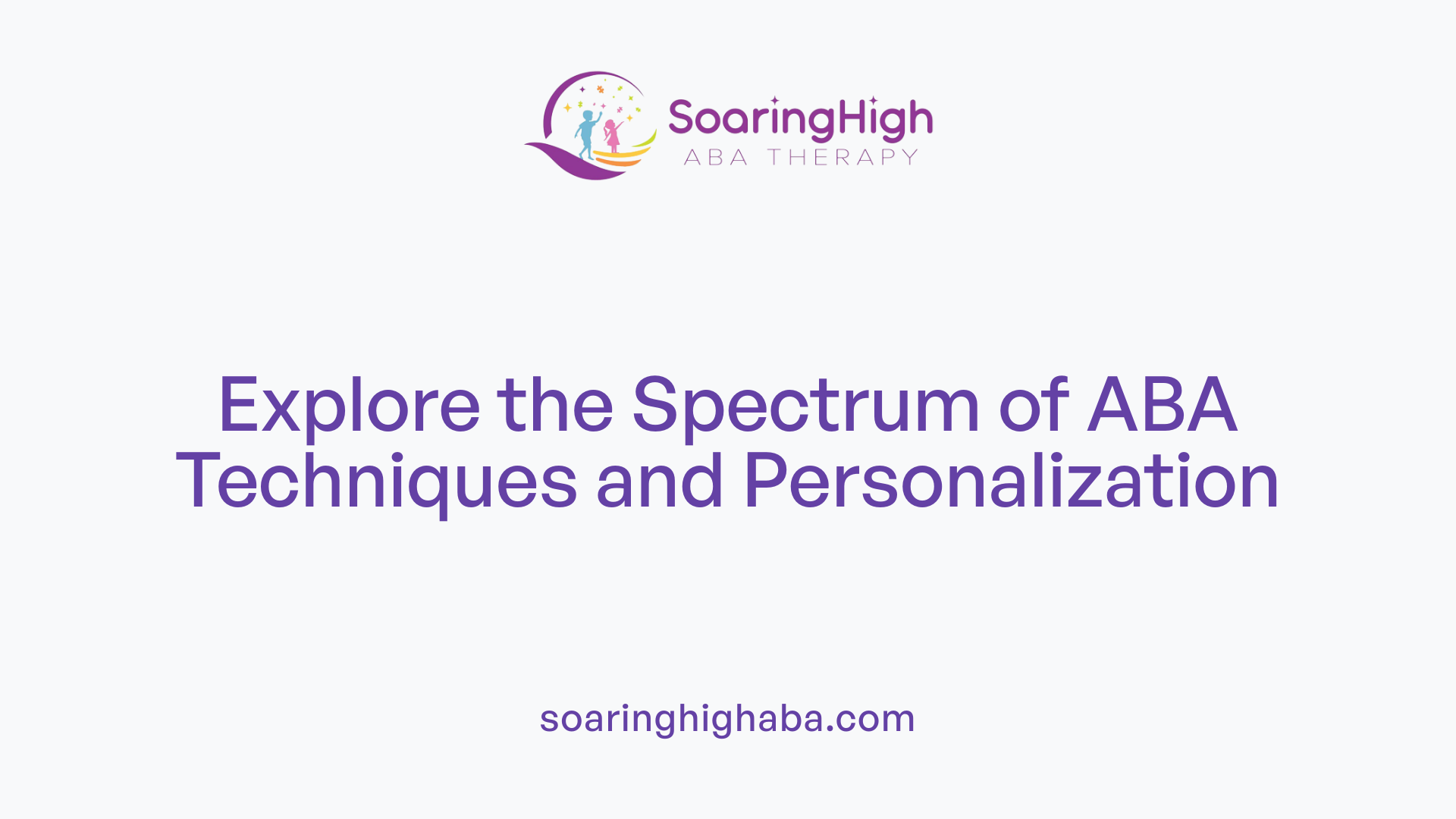
How can ABA therapy be customized to support various learning styles?
ABA therapy offers flexible approaches that can be tailored to meet the unique needs of each individual. By designing personalized intervention plans, therapists incorporate the person's preferences, interests, and sensory sensitivities to make learning more effective.
For visual learners, visual supports such as picture schedules, social stories, and visual cues help clarify routines and expectations. Hands-on activities, role-playing, and physical engagement support kinesthetic learners, making skills more tangible. Reinforcement strategies are also adapted to each individual's motivations—using tangible rewards, praise, or token systems that match their interests.
Assessments and ongoing collaboration with caregivers and educators enhance the customization process. Therapies like task analysis are used to break down complex skills into manageable steps, ensuring that they align with the learner’s strengths. Sensory accommodations, such as noise-canceling headphones or fidget toys, further support those with sensory sensitivities.
Ultimately, continuous data collection and flexibility enable therapists to modify strategies, ensuring that each individual’s learning style is supported efficiently for optimal development.
Supporting Individual Learning Styles with ABA
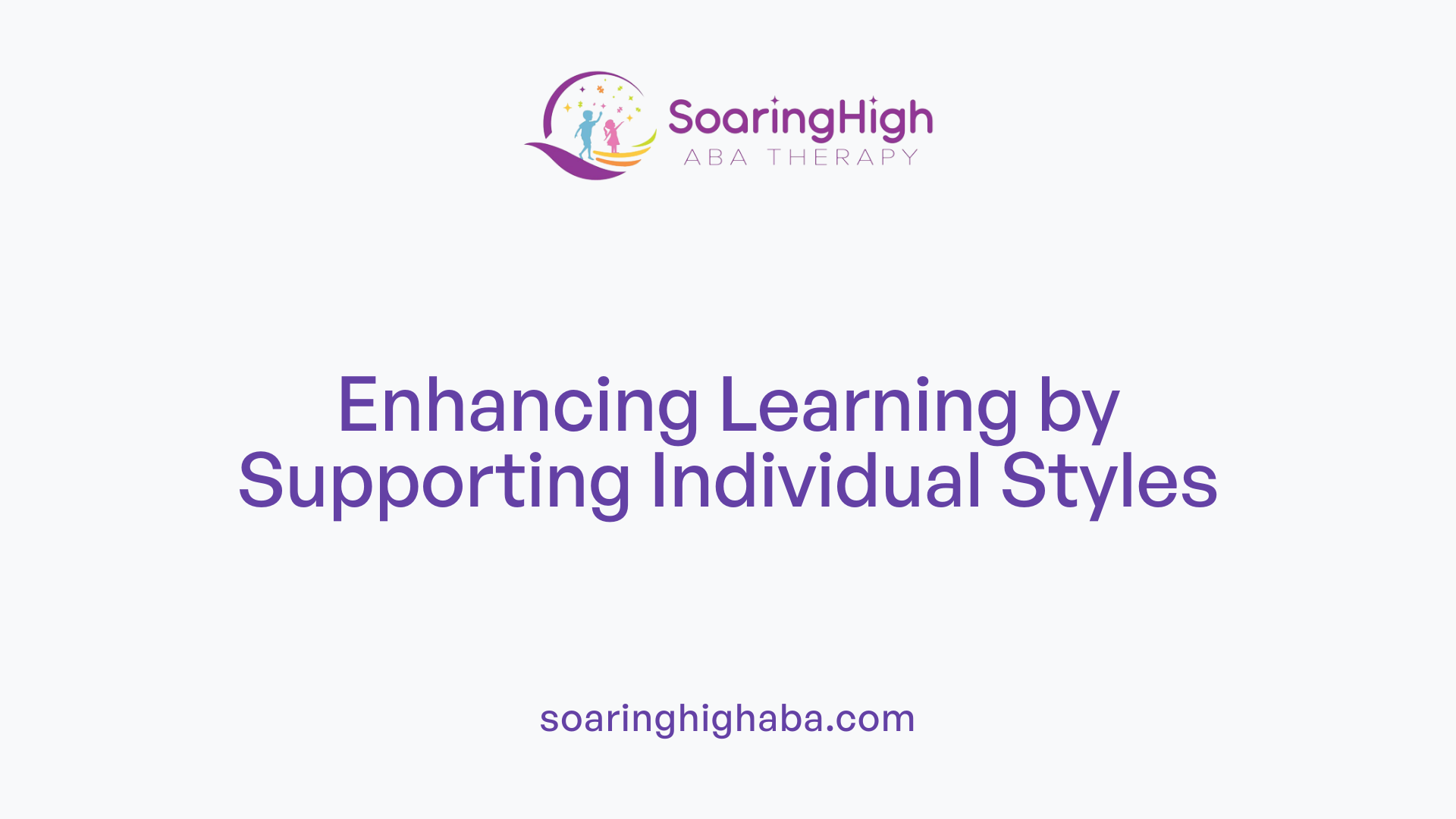
How does matching teaching methods to learning styles such as visual, auditory, and kinesthetic improve outcomes?
Adapting ABA techniques to fit individual learning styles significantly enhances engagement and skill acquisition. Visual learners benefit from visual supports like picture schedules, social stories, and visual cues, making routines and expectations clearer. Auditory learners respond well to spoken instructions, verbal praise, and music-based reinforcement strategies. Kinesthetic learners thrive when learning involves hands-on activities, movement, and physical participation.
In practice, this means integrating a combination of methods tailored to each child's preferences. For example, using visual aids for one student and incorporating physical tasks for another helps to maximize their natural strengths. This personalized approach not only fosters better understanding but also reduces frustration and supports sustained motivation.
Implementing multimodal strategies—such as combining visual supports with hands-on tasks or auditory cues—ensures that learners with diverse styles are engaged and able to access learning more effectively. Customizing ABA interventions in this way makes skill development more relevant and attainable.
What role do tailored interventions play in improving learning outcomes for individuals with autism?
Tailored interventions are crucial in enhancing educational and developmental progress for individuals with autism. They involve customizing strategies based on detailed assessments of each learner's unique needs, preferences, and strengths.
This personalization allows for more targeted teaching, such as using pictures for children with visual strengths or implementing social stories for those who struggle with social cues. Evidence-based programs like EIBI, NDBI, and ESDM emphasize intensive, personalized plans that foster improvements in communication, social interaction, and independence.
Family involvement and real-world application of skills further support generalization and maintenance of learned behaviors. These customized interventions not only promote better learning outcomes but also help build confidence and reduce challenging behaviors.
How do tailored interventions support individuals with different learning preferences?
Supporting diverse learning preferences through tailored interventions involves aligning teaching methods with each individual’s natural way of learning. Visual learners benefit from images, charts, and visual storytelling, which help clarify information.
Auditory learners respond best to discussions, verbal instructions, and tone variations. Kinesthetic learners enjoy engaging in activities that involve movement, such as role-playing or hands-on projects. Verbal learners benefit from reading and writing tasks, engaging the language centers more actively.
Integrating these preferences into ABA—by employing visual schedules, which aid visual learners; incorporating music or verbal cues for auditory learners; and designing hands-on tasks for kinesthetic learners—ensures that each student can access and process information effectively. This tailored approach leads to increased participation, understanding, and overall success.
How can practical strategies for customizing ABA cater to more diverse learning profiles?
Strategies for customizing ABA to individual learning profiles include using a variety of reinforcement methods, visual supports, and sensory accommodations. For example, incorporating token systems and tangible rewards appeals to learners motivated by tangible incentives.
Providing visual supports like picture exchange systems, social stories, and visual cues helps clarify daily routines and social expectations. Sensory-friendly tools like noise-canceling headphones or fidget toys can help regulate sensory sensitivities, especially for hypersensitive learners.
Creating flexible learning environments with choice boards, adjustable task difficulty, and varied instructional formats allows educators to meet each child's unique needs. These adaptable strategies foster a more inclusive, effective learning experience that respects each learner’s preferences, promotes independence, and sustains motivation.
Why is it important to consider individual differences such as sensory sensitivities and behavioral challenges?
Recognizing individual differences such as sensory sensitivities and behavioral challenges is vital for effective ABA intervention. Sensory sensitivities—hypersensitivity or hyposensitivity—can influence how a child responds to stimuli and can affect engagement and learning.
For hypersensitive children, minimizing noise, bright lights, or strong smells through environmental modifications helps create a more comfortable setting. Hyposensitive learners may require more intense sensory input or varied activities to stay focused.
Behavioral challenges like rigidity, communication difficulties, or executive functioning issues require specific strategies such as social stories or functional communication training to promote better regulation and skill development. Tailoring approaches to these individual differences ensures that interventions are respectful, effective, and supportive, minimizing distress and enhancing learning.
How do matching instructional methods to individual preferences promote better educational experiences?
Matching instructional methods to individual preferences results in more meaningful and effective learning experiences. When teaching is aligned with a child's strengths—such as visual processing, kinesthetic activity, or auditory learning—they are more likely to stay engaged, motivated, and independent.
This alignment encourages active participation and makes complex skills more accessible. For instance, a child with a strong visual learning preference can better understand routines through pictures, reducing anxiety and promoting independence.
Research shows that when interventions suit each learner’s natural tendencies, it fosters a positive attitude towards learning, facilitates skill transfer across settings, and leads to longer-lasting behavioral changes.
How can educators and caregivers implement these individualized strategies effectively?
To implement these strategies successfully, educators and caregivers should begin with comprehensive assessments to identify each child's learning style, sensory sensitivities, and behavioral profile. Using this information, they can select appropriate visual supports, sensory tools, and instructional methods.
Professional development focusing on differentiated instruction and inclusive ABA practices helps staff apply these methods confidently. Collaboration among teachers, therapists, and families ensures consistency across environments.
Creating flexible lesson plans that incorporate multiple modalities, offering choices to learners, and regularly reviewing progress through data collection foster continuous adaptation. Involving the learner in selecting preferred activities also promotes motivation and ownership of their learning journey.
Ultimately, individualized strategies rooted in thorough assessment, ongoing monitoring, and collaborative effort create a supportive educational environment that maximizes each child's potential.
Creating an Inclusive Learning Environment
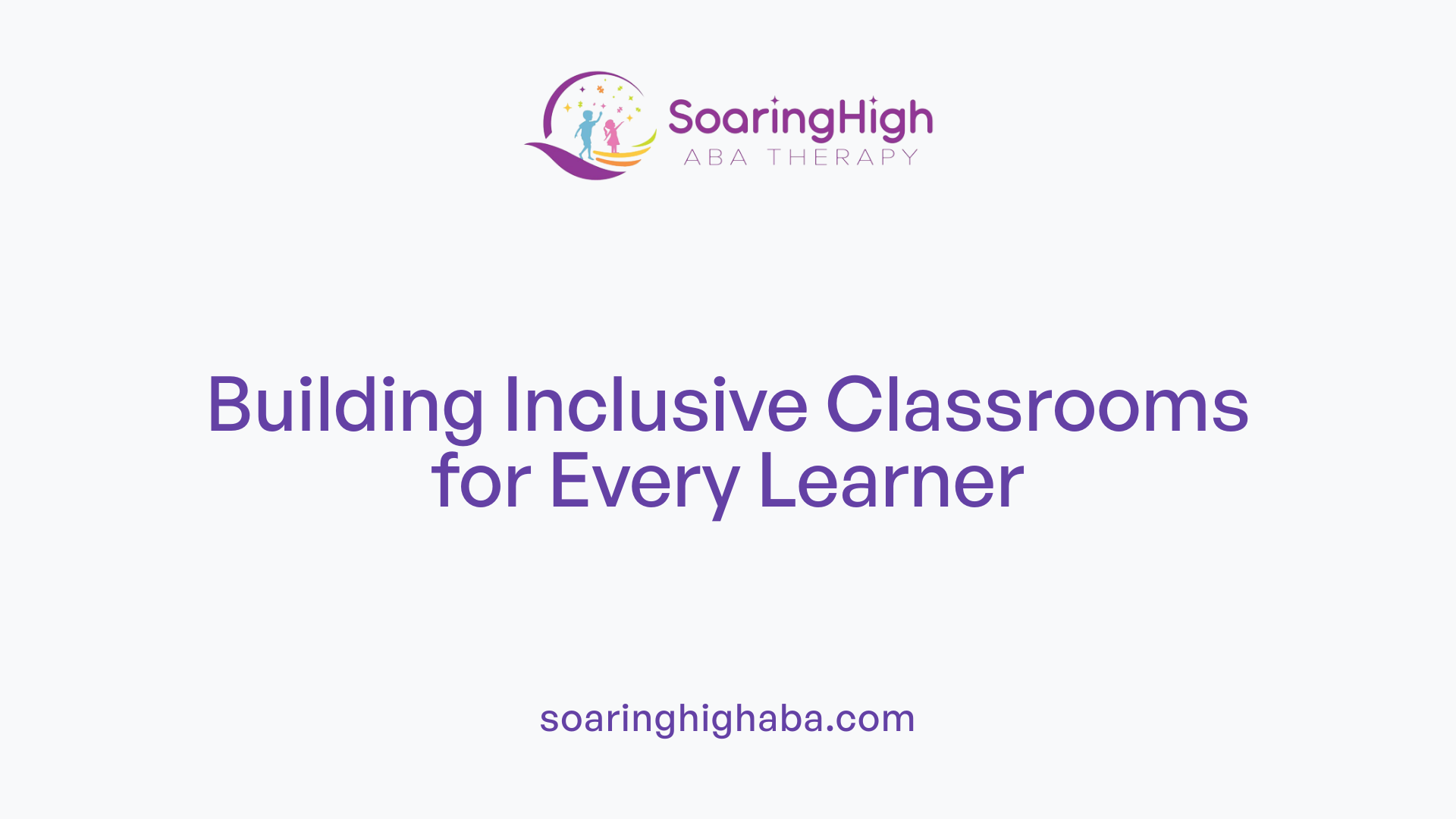 Designing classrooms that are welcoming and accommodating to all learners is essential for fostering inclusive education, especially for children with autism. These environments should clearly communicate expectations, minimize distractions, and provide sensory support to enhance focus and comfort.
Designing classrooms that are welcoming and accommodating to all learners is essential for fostering inclusive education, especially for children with autism. These environments should clearly communicate expectations, minimize distractions, and provide sensory support to enhance focus and comfort.
A well-structured classroom begins with clear visual cues and routines. Visual schedules, social stories, and visual support tools help students understand daily activities and expectations, reducing anxiety and promoting independence. This consistency makes it easier for students to navigate their day and engage actively.
Minimizing distractions is also crucial. Arranging the classroom layout to create designated quiet zones and minimizing clutter helps students concentrate on tasks. Using calming color schemes and soft lighting can further create a soothing atmosphere conducive to learning.
Sensory accommodations play a pivotal role in creating a supportive space. Tools like noise-canceling headphones, fidget toys, and weighted blankets help manage sensory sensitivities, allowing children to regulate their emotions and stay engaged. Providing a sensory corner where students can retreat when overwhelmed ensures they have immediate access to calming tools.
Creating a flexible environment that adapts to individual sensory and learning needs enables all students to thrive. Combining visual supports with sensory accommodations and structured routines contributes to a classroom where everyone can succeed.
How do tailored interventions support individuals with different learning preferences?
Tailored interventions support individuals with different learning preferences by customizing instructional methods to fit their strengths and styles. For visual learners, visual aids such as charts, diagrams, and videos make information more accessible. Auditory learners benefit from discussions, listening activities, and verbal explanations. Kinesthetic learners prefer hands-on activities and movement-based learning that involve physical engagement.
In practice, effective teachers incorporate a variety of multimodal strategies, including flexible grouping, learning stations, and technology tools. These approaches allow children to learn in ways that resonate with their natural preferences, improving engagement and understanding. Personalizing instruction not only makes learning more meaningful but also encourages confidence and motivation.
By addressing diverse learning styles, educators can create inclusive environments where every student has equitable opportunities to succeed.
Practical Implementation of Tailored Interventions
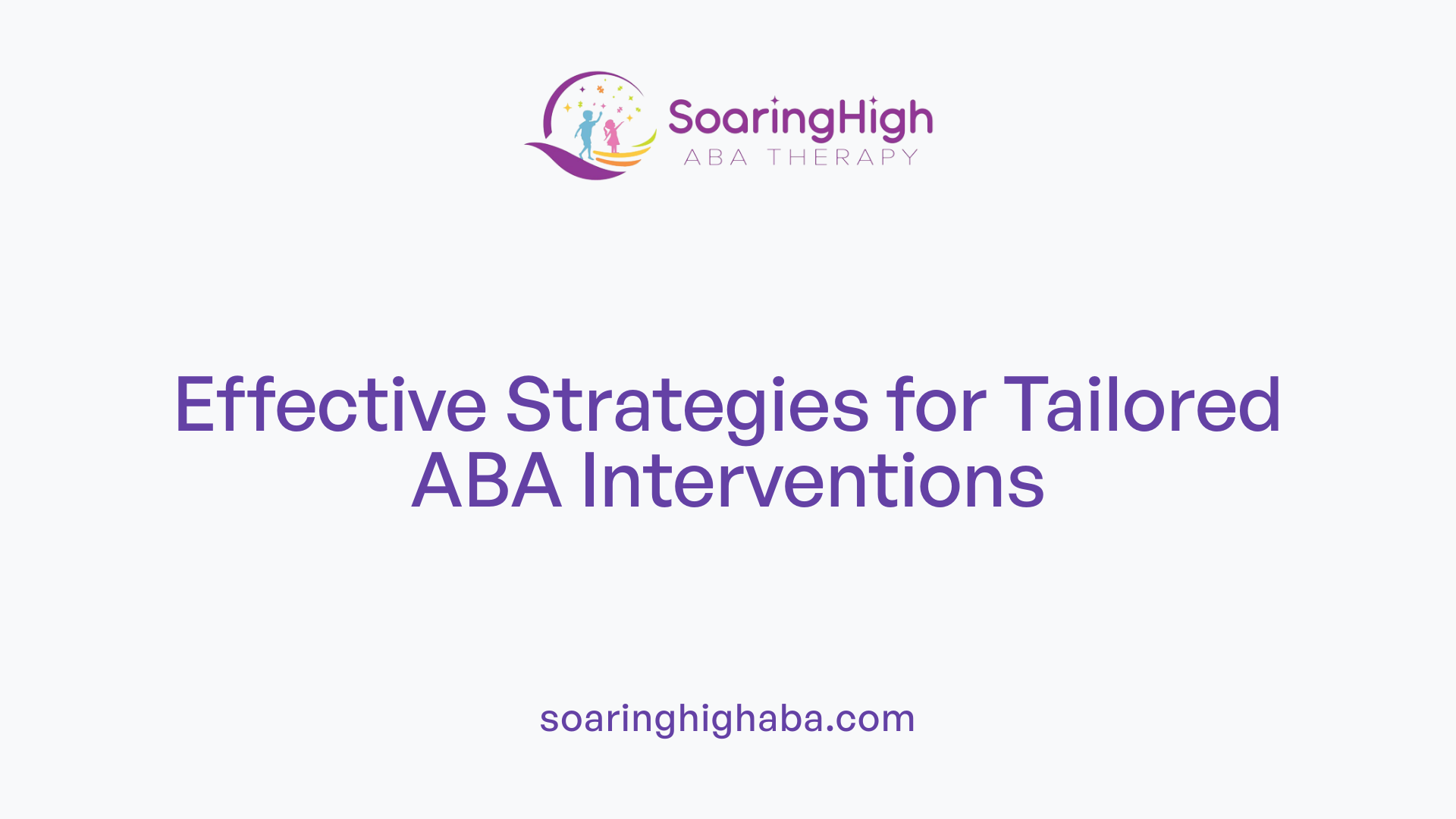 Applying ABA strategies across various environments such as home, school, and community settings requires a flexible and individualized approach.
Applying ABA strategies across various environments such as home, school, and community settings requires a flexible and individualized approach.
One common method involves integrating techniques like Discrete Trial Training (DTT) and Natural Environment Training (NET) into daily routines. For example, DTT can be used to teach specific skills in a structured way, while NET promotes learning through natural activities like play or routine tasks, making skills more applicable to real-life situations.
Collaboration among families, educators, clinicians, and caregivers is crucial. Consistent communication and shared goals help reinforce behaviors and skills across different settings. Using visual supports, social stories, and behavioral prompts can smooth the transition and make expectations clear.
Data collection plays a vital role. Regular tracking of progress enables adjustments to interventions, ensuring they remain effective as the learner grows and their needs change.
To support individual sensory and communication preferences, interventions should be tailored—using visual, auditory, or kinesthetic methods—helping to promote generalization and retention.
What methods are used to apply tailored interventions across different environments?
Applying tailored interventions across various settings involves adapting strategies to the specific context, whether at home, school, or in community settings. Discrete Trial Training (DTT) and Natural Environment Training (NET) can be incorporated into daily routines, using real-life situations to teach appropriate behaviors and skills. Collaboration among families, educators, clinicians, and caregivers ensures consistency and reinforcement across environments. Regular data collection and progress monitoring allow practitioners to adjust interventions based on performance and emerging needs. Tools like visual supports, social stories, and behavioral prompts facilitate seamless implementation. Tailoring interventions to individual sensory preferences and communication styles further supports skill generalization and maintenance over time.
What challenges are faced when applying tailored strategies in diverse settings, and how can they be addressed?
Challenges in applying tailored strategies across diverse settings include variability in environment, resource limitations, and differing levels of support from caregivers and staff. To address these challenges, comprehensive staff training and ongoing professional development are vital, ensuring everyone understands and can effectively implement individualized plans. Establishing clear communication channels among team members fosters consistency. Using visual aids, social stories, and structured routines helps mitigate environmental distractions and sensory issues. Regular data collection and analysis enable timely adjustments to interventions. Engaging families and caregivers in the planning and execution process ensures interventions are reinforced and sustained, promoting consistent progress.
More information:
For implementing ABA strategies effectively in multiple settings, targeted methods like visual supports, social stories, token reinforcement systems, and structured routines are invaluable. Consistent data collection and regular team meetings ensure interventions are personalized and adaptable. Overcoming environmental variability and resource limitations involves training and ongoing support for staff, along with strong communication channels among all stakeholders while considering sensory and communication preferences.
The Role of Data and Family Involvement in Tailored ABA
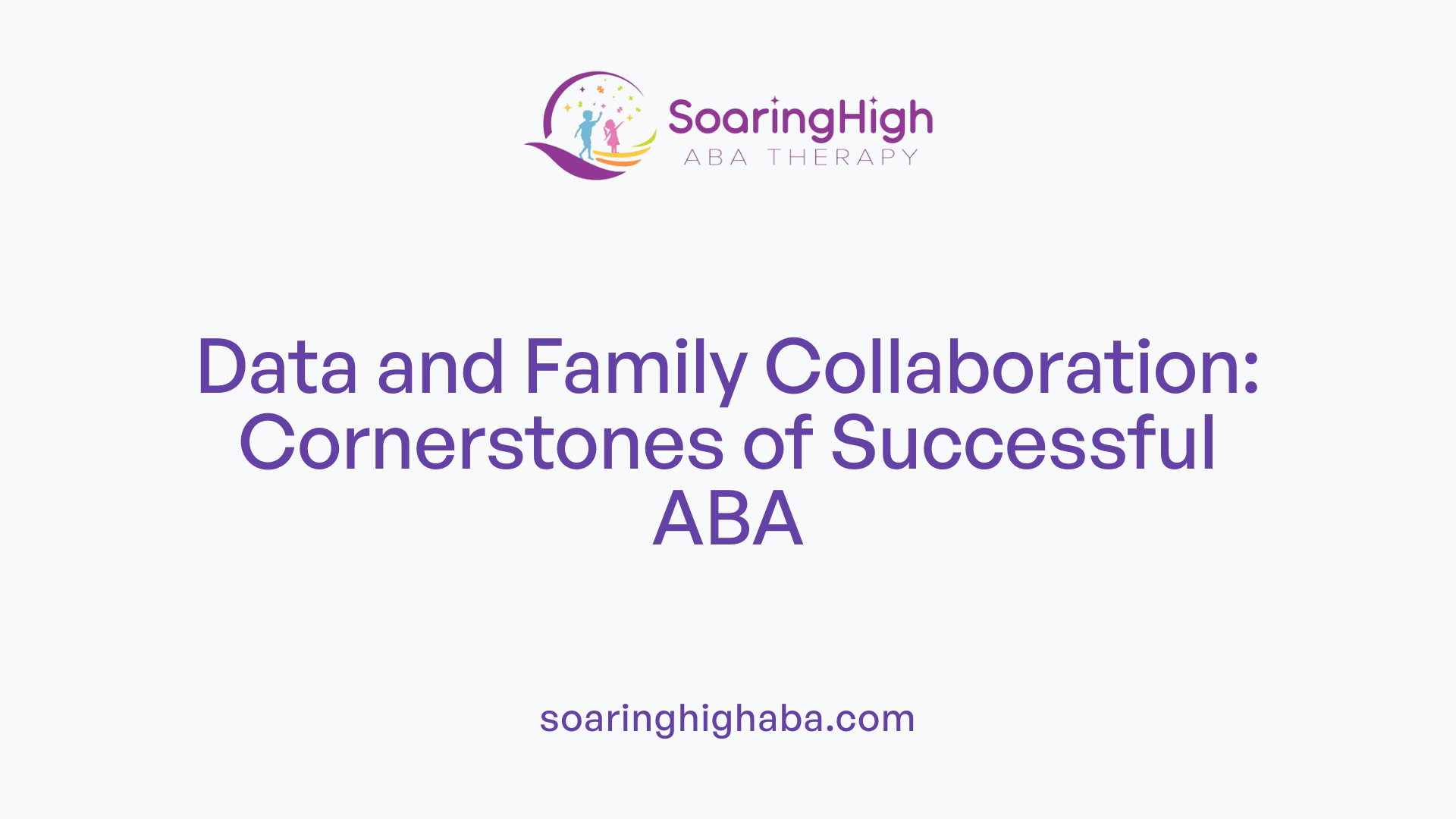
What is the significance of data collection and analysis in ABA therapy?
Data collection is the foundation of effective ABA therapy. By systematically recording behaviors, skill acquisition, and response to interventions, clinicians can evaluate what strategies work best for each individual. This ongoing process allows for data-driven decision-making that optimizes learning progress and behavioral improvements.
Analyzing this data helps to identify patterns, monitor progress over time, and adjust interventions as needed. For instance, if a certain prompting technique yields better engagement, the clinician can emphasize that approach. Conversely, if a strategy isn't effective, it can be modified or replaced. This iterative cycle ensures interventions remain personalized, relevant, and efficient.
Moreover, regular data analysis supports accountability and transparency in therapy. Families and educators can see tangible evidence of progress, which boosts motivation and confidence in the intervention plan. Overall, meticulous data collection and analysis are vital components that uphold the scientific integrity of ABA, ensuring each child receives the most effective support possible.
How does family involvement enhance the effectiveness of tailored ABA strategies?
Family participation is integral to the success of individualized ABA programs. Since most behaviors and skills are expressed across various environments, parents and caregivers are crucial allies in implementing and reinforcing intervention strategies outside the therapy setting.
Families provide critical insights into a child's daily routines, preferences, and challenges, enabling clinicians to adapt strategies that are both practical and sustainable. This deep understanding facilitates the creation of personalized goals aligned with the child's natural contexts, increasing the likelihood of meaningful and lasting change.
Active family involvement also boosts motivation and engagement. When parents are part of the planning and decision-making process, they feel empowered and committed to reinforcing skills at home, in school, and within the community. This consistency boosts generalization of skills, helping children apply what they learn in therapy to real-world situations.
Additionally, families contribute to ongoing progress monitoring. They collect data and provide feedback that informs therapy adjustments, ensuring interventions remain responsive and tailored to the child's evolving needs. Studies consistently show that when families are involved, outcomes improve significantly, underscoring their pivotal role in effective ABA intervention.
How do tailored interventions specifically improve learning outcomes for individuals with autism?
Customized ABA strategies are designed around each child's unique profile, considering factors like learning style, communication abilities, sensory sensitivities, and behavioral tendencies. Such personalization makes learning more engaging and accessible.
For example, some children respond better to visual supports while others benefit from hands-on activities or social stories. By aligning teaching methods with individual preferences, therapists can foster motivation and reduce frustration.
Tailored interventions often incorporate evidence-based practices such as Natural Environment Training (NET), which teaches skills in real-life contexts, or Task Analysis, breaking down complex tasks into manageable steps. This careful structuring enhances skill acquisition and independence.
Furthermore, programs like Pivotal Response Treatment (PRT) target core areas like motivation, leading to broader improvements across multiple domains such as communication, socialization, and adaptive behaviors.
Research indicates that when interventions are customized to meet individual needs, children demonstrate faster learning, improved social interaction, and greater functional independence. Personalization not only enhances engagement but also maximizes the effectiveness of therapeutic efforts.
How can integration of ABA techniques across various settings support comprehensive development?
Applying ABA strategies in diverse environments—home, school, and community—ensures consistency and promotes skill generalization. When children experience similar interventions across settings, they are more likely to apply learned behaviors in real-life situations.
Integrating techniques like Token Systems, Errorless Teaching, and Visual Supports across environments helps reinforce routines and expectations. For example, visual schedules at school and home provide clear cues, reducing anxiety and increasing predictability.
Collaboration among therapists, teachers, and family members fosters a unified approach. This teamwork allows for shared goals, synchronized reinforcement, and ongoing data collection, all of which contribute to more robust learning outcomes.
Activities such as peer-mediated interventions or social stories can be implemented in classroom settings to promote social skills and peer acceptance. Sensory accommodations, like noise-canceling headphones or weighted blankets, support sensory regulation in various environments.
In summary, a consistent, well-coordinated approach across environments maximizes skill retention and generalization, leading to comprehensive development and improved quality of life for individuals with autism.
| Aspect | Details | Additional Information |
|---|---|---|
| Data collection | Systematic recording of behaviors and progress | Supports evidence-based adjustments |
| Analysis | Monitoring trends and outcomes | Enables personalized interventions |
| Family involvement | Active participation in planning and reinforcement | Enhances generalization and motivation |
| Teaching methods | DTT, NET, VBT, PRT, FCT, and Visual Supports | Adapted to individual needs |
| Settings | Home, school, community | Promotes skill transfer and maintenance |
| Behavior modification | Reinforcement, errorless teaching, token systems | Facilitates learning and positive behavior |
| Sensory considerations | Visual supports, sensory tools | Helps manage sensitivities |
Effective ABA therapy hinges on meticulous data use and family collaboration, ensuring interventions are tailored, practical, and impactful. When these elements are harmonized across contexts, children with autism can achieve meaningful developmental progress.
Empowering Through Personalization and Collaboration
The success of ABA therapy fundamentally hinges on the careful customization of interventions to align with each individual's unique learning style, sensory profile, and developmental needs. Employing a variety of evidence-based techniques like DTT, NET, and visual supports allows practitioners to build engaging, supportive, and effective learning environments. When tailored strategies are complemented by active family involvement and meticulous data collection, they foster meaningful progress, greater independence, and confidence in individuals with autism. Ultimately, personalized ABA not only enhances skill acquisition but also empowers learners by respecting their individual differences and promoting inclusive, supportive educational experiences.
References
- ABA Therapy Techniques: Key Methods Explained
- Autism Learning Styles: Tailoring Education for Unique Needs
- Autism and Educational Interventions | Inclusive ABA
- Integrating ABA Therapy in Schools: Strategies for Success
- How ABA Therapy Helps in Special Education Programs
- 5 Ways ABA Therapy Helps with Classroom Adaptations
- ABA in Schools & the Classroom: The Key to Inclusive Education
- Behavioral Interventions for Autism Spectrum Disorder



























































































